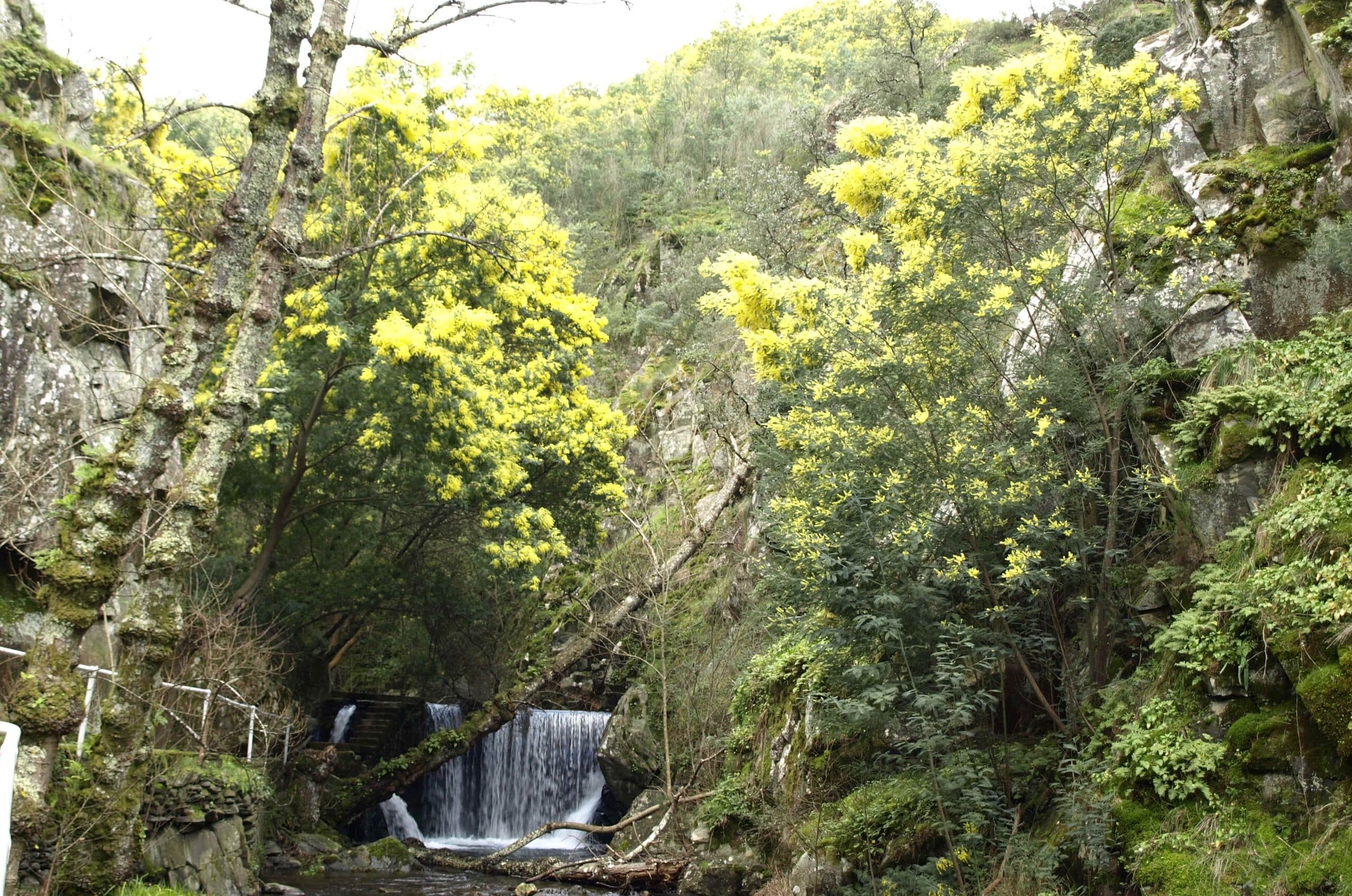Mimosas/ Acacias proliferate throughout Portugal
The proliferation of mimosa (or acacia as they are often called in Portugal) in riverside zones threatens biodiversity and the functioning of aquatic ecosystems, according to research from the University of Coimbra (UC) carried out in the Lousã mountain range.
“This study shows that biological invasions in a terrestrial ecosystem can affect adjacent ecosystems, such as streams, so it is important to consider the interdependence between ecosystems when assessing the effects of these invasions,” said researcher Verónica Ferreira, quoted in a press release sent out today.
As part of this study, scientists carried out monthly sampling and measurements for a year “in six waterways in the Serra da Lousã – an area already heavily invaded by mimosa (Acacia dealbata). Three of the streams are in native species forest and three in forests “invaded by mimosa”.
What seems to have been found is that “ invasion of riverside forests by acacias affects the aquatic communities in the streams.
“The diversity of decomposer microorganisms and macroinvertebrates are lower in streams that flow through acacia woods, compared to streams associated with native species forest, largely as a result of the lower diversity of plant debris that enters the streams from acacia and which are dominated by mimosa debris”, explains Verónica Ferreira.
“On the other hand, streams in native species forests receive a great diversity of plant detritus as a result of the greater diversity of plants.”
For the researcher from the Centre for Marine and Environmental Sciences (MARE), “changes in the diversity of aquatic organisms in streams in the invaded forest are worrying, since less diverse communities are less prepared to deal with environmental changes that may occur, such as those associated with climate change, and may be less effective at performing ecosystem functions, such as nutrient recycling.“
Faced with the difficulty of managing invasive species in riverside forests, Verónica Ferreira said that “the best option is to protect riverside zones in the upper reaches of river basins, which are generally in a better state of conservation”.
This is the crux of the issue with mimosas, however. How to manage their rampant proliferation. Years ago Quercus was reported as “fearing that it was losing the war against acacias in the Peneda-Geres national park” – the solution being ‘much more in the way of investment in measures of combat’, said the NGO at the time.
In fact, Quercus’ warnings underline everything found in this latest study, but gave the wider view that these invasive trees and bushes “produce a large amount of combustible material, highly flammable, which accumulates on the forest floor”, contributing to an increase in the frequency and intensity of fires.
“In addition, acacia annihilates native species, alters soil fertility and reduces the availability of water for other plants (…) These invasive plants leave millions of seeds in the soil per hectare, which remain viable for decades and are ready to germinate at any time, especially after fires,” the NGO added, explaining why ‘management’ of this scourge has largely failed.
“Sadly, the beautiful oak-based hardwood forests are giving way to a monotonous and almost barren landscape dominated by mimosas,” said Quercus.
Seven years on, this latest study has been published in the journal Freshwater Biology. It was carried out as part of the project “EXSTREAM – Effects of EXotic tree species on STREAM communities and processes: the case of invasion of native forests by Acacia spp.”, funded by the Foundation for Science and Technology.
Source material: LUSA/ wilder.pt


























